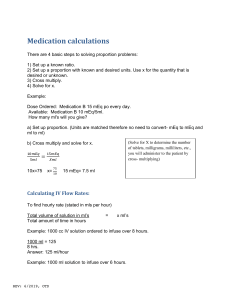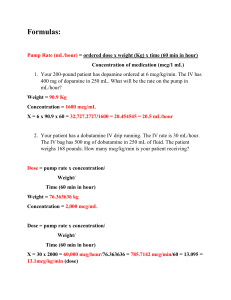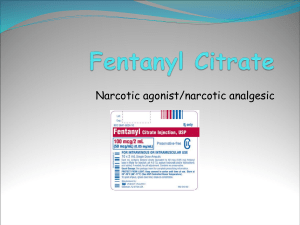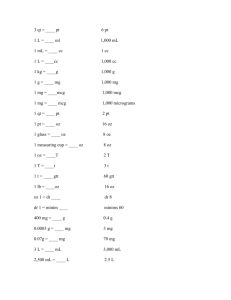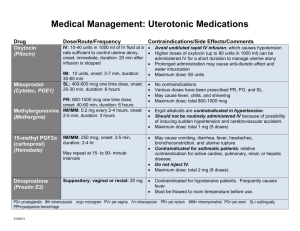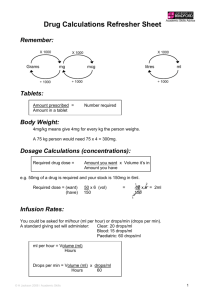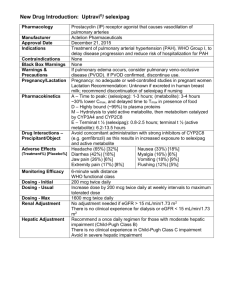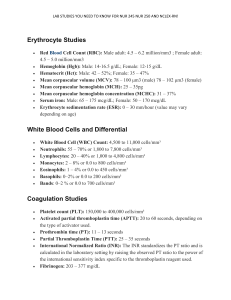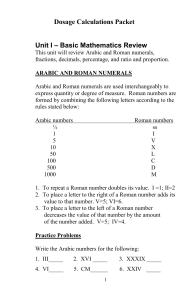Medication Calculations Review
advertisement
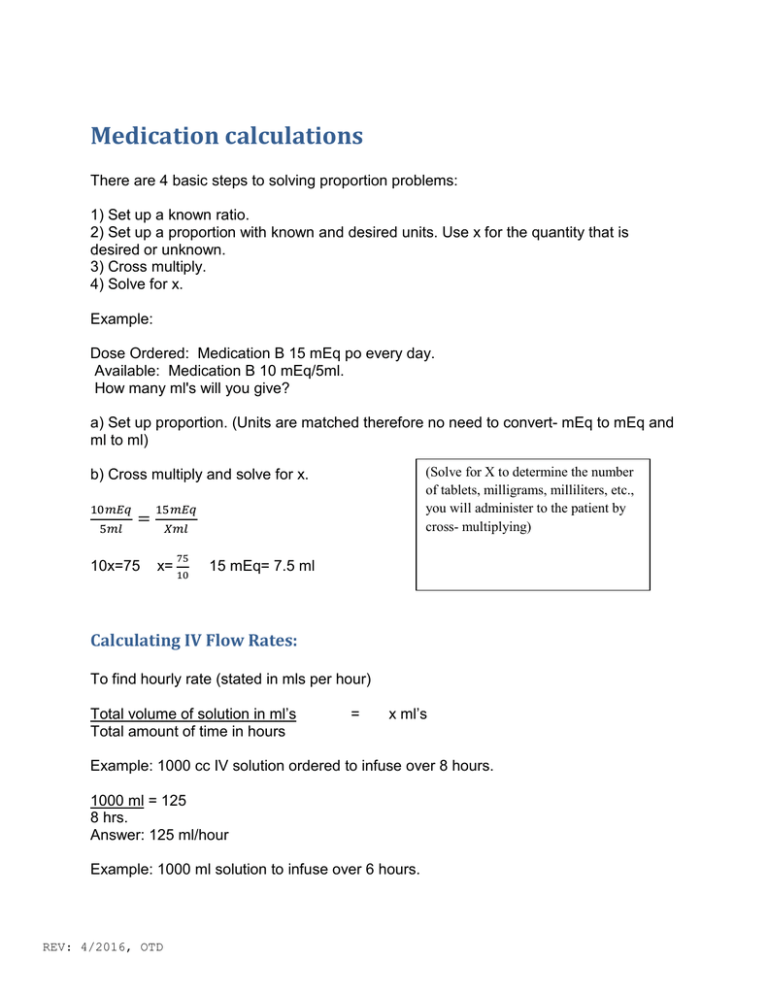
Medication calculations There are 4 basic steps to solving proportion problems: 1) Set up a known ratio. 2) Set up a proportion with known and desired units. Use x for the quantity that is desired or unknown. 3) Cross multiply. 4) Solve for x. Example: Dose Ordered: Medication B 15 mEq po every day. Available: Medication B 10 mEq/5ml. How many ml's will you give? a) Set up proportion. (Units are matched therefore no need to convert- mEq to mEq and ml to ml) (Solve for X to determine the number of tablets, milligrams, milliliters, etc., you will administer to the patient by cross- multiplying) b) Cross multiply and solve for x. 10𝑚𝐸𝑞 5𝑚𝑙 = 10x=75 15𝑚𝐸𝑞 𝑋𝑚𝑙 75 x= 10 15 mEq= 7.5 ml Calculating IV Flow Rates: To find hourly rate (stated in mls per hour) Total volume of solution in ml’s Total amount of time in hours = x ml’s Example: 1000 cc IV solution ordered to infuse over 8 hours. 1000 ml = 125 8 hrs. Answer: 125 ml/hour Example: 1000 ml solution to infuse over 6 hours. REV: 4/2016, OTD 1000 ml = 166.6 = 167 6 hrs. Answer: 167 ml or ml/hr (Remember: when answer does not come out evenly, round off to the nearest whole number. If 5 & greater round up, below 5, round down.) To find flow rate stated in drops per minute: Drop factor is the number of drops it takes to equal 1 ml with a specific type of IV tubing. The drop factor is stated on the tubing package. ml/hr. x drop factor = total amount of time in minutes gtts/min Example: IV order D51/2 NS at 120 ml/hr The drop factor is a 15 gtts/ml and the flow rate is 120 ml/hr. 120ml/hr x 15 gtts/ml = 1800 = 30 gtts/min 60 mins/hr 60 IV drip calculations Order is written as mg/hr. Example: Order: Fentanyl 5 mg/hr. The bag is labeled 250 mg in 500 ml of solution. How fast will the IV need to be infused to give the correct dose? 1. The IV rate will be as an hourly rate, so no conversion needs to be made for time. If the order was written with a different time, you would need to calculate the mg/hr. (use ratio and proportion) 2. Put the problem in ratio and proportion. 5 mg = 250 mg x ml 500 ml 5 (500) = 250 x 2500 x = 10 ml/hr IV rate 250 C. When the order is written as unit of mcg/kg/min. Example: Dopamine order: 5 mcg/kg/min. Bag is labeled:. Dopamine 400 mg in 250ml NS. Pt weight= 63 kg. Dose ordered x weight (if weight based) x volume x time Have (dose of drug you have; must match units in dose ordered) ** Remember that pumps deliver ml/hr, so drips that deliver per minute need to have time conversion factored in (60 min/1 hr); those drips that are delivered per hour do not need this time conversion 1. Desired (dose ordered) = 5 mcg/kg/min x (pt weight) 63 kg 2. Have = 400 mg Dopamine; must convert to mcg by multiplying by 1000 3. Volume = 250 ml (volume in IV bag) 4. Also include time conversion of 60 min/hr 5 mcg/kg/min x 63 kg x 250 ml x 60 min/hr 400,000 mcg (400 mg x 1000 mcg/1 mg) = 4725000 400,000 Answer: 11.8 ml/hr----this is what the pump must be set at (-round up to 12ml/hr) Order: Dopamine 20 mcg/Kg/minute. The bag is labeled Dopamine 100 mg/50 ml. The patient weighs 88 lbs. How fast will the IV run to give the dose? 1. Must convert pounds to kg 88 ÷ 2.2 = 40kg Dose ordered x weight (if weight based) x volume x time Have (dose of drug you have; must match units in dose ordered) 20 mcg/kg/min x40 kg x50 ml x 60 min = 2400000 = 24 ml /hr 100,000 mcg/ml 100,000
